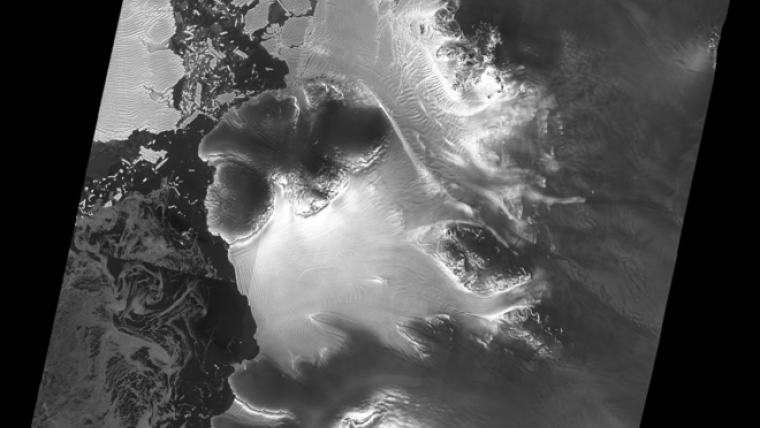CryoSat and Sentinel Unveil Antarctic Ice Dynamics
Antarctica’s ice shelves are thinning and scientists have recently discovered huge canyons cutting through the underbelly of these shelves, potentially making them more fragile. CryoSat and Sentinel-1 missions shine new light on this hidden world. There are huge inverted canyons in the underside of ice shelves, but little is known about how they form and how they affect the stability of the ice sheet.
One type is thought to be caused by subglacial water that drains from beneath the ice sheet and runs into the ocean. In this region, the ocean water is stratified, with the warmer water at the bottom. However, as the colder meltwater pours down into the ocean it then rises because it is less dense than the seawater – but as it rises it drags up the warm bottom water which causes the underbelly of the floating ice shelf to melt.
Another type is thought to be caused by the way ocean water circulates under the shelf. Scientists have been using ESA’s CryoSat to study changes in the surface of the ice shelf and the Copernicus Sentinel-1 mission to study how shelves flow to learn more about what’s going on hidden from view.
Their focus has been on the Dotson ice shelf in West Antarctica. Noel Gourmelen from the University of Edinburgh said they have found subtle changes in both surface elevation data from CryoSat and ice velocity from Sentinel-1 which shows that melting is not uniform, but has centred on a 5km-wide channel that runs 60km along the underside of the shelf. Unlike most recent observations, they think that the channel under Dotson is eroded by warm water, about 1°C, as it circulates under the shelf, stirred clockwise and upward by Earth’s rotation.
Longer-running Process
Revisiting older satellite data, the researchers think that this melt pattern has been taking place for at least the entire 25 years that Earth observation satellites have been recording changes in Antarctica. Over time, the melt has calved in a broad channel-like feature up to 200m deep and 15km across that runs the entire length of the underside of Dotson ice shelf. This canyon is deepening by about 7m a year and that the ice above is heavily crevassed.
Melt from Dotson ice shelf results in 40 billion tonnes of freshwater being poured into the Southern Ocean every year and this canyon alone is responsible for the release of four billion tonnes.

Value staying current with geomatics?
Stay on the map with our expertly curated newsletters.
We provide educational insights, industry updates, and inspiring stories to help you learn, grow, and reach your full potential in your field. Don't miss out - subscribe today and ensure you're always informed, educated, and inspired.
Choose your newsletter(s)
























